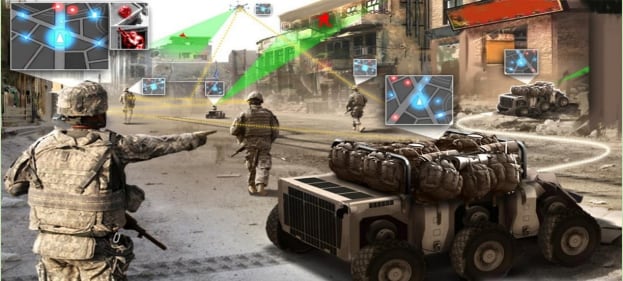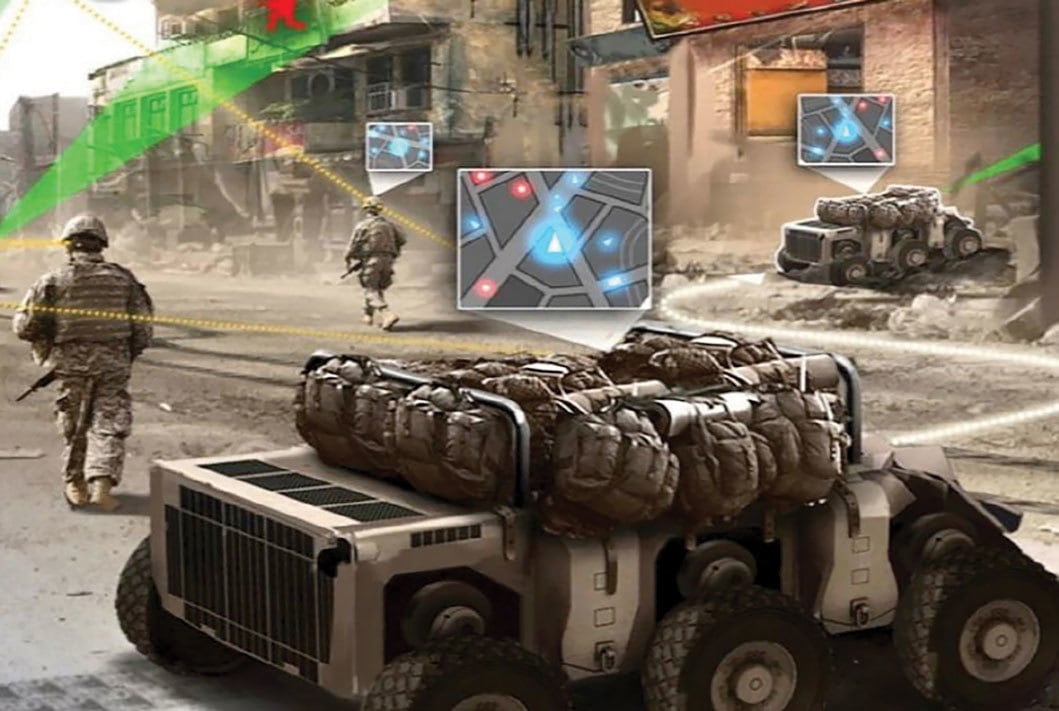Soldiers from a variety of backgrounds recently met with a national consortium on ground vehicles to find out what problems that bedevil soldiers might be fixed by robots or autonomous solutions.
Groups of six to 12 soldiers outlined difficulties they face on the battlefield during a meeting at Fort Benning, Georgia, with the National Advanced Mobility Consortium.
The groups included representatives from the following soldier communities: the 75th Ranger Regiment, the captains career course, infantry, Stryker, Bradley, reconnaissance and the Robotics Requirements Division.
Col. Tom Nelson, director of the Robotics Requirements Division, said the groups met with consortium representatives to lay out problems such as increasing situational understanding on the battlefield or mitigating risk in the close, urban fight.
The effort specifically focused on the problem and not a specific system or platform, Nelson said.
But the problems are looking at the lower ends of combat, with an eye to the squad, platoon and company levels, said Don Sando, deputy to the commanding general of the Maneuver Center of Excellence.
Both he and Nelson are coordinating the efforts of the newly organized Robotics Center of Innovation at Fort Benning.
By taking that approach, officials hope that a problem facing a Stryker unit would have applications for an infantry, reconnaissance or armored unit as well.
For example, Sando said, problems in urban areas might plague any of the various combat units.
“How do you understand quickly that environment, which changes dynamically?” he said. “And how do you precisely engage enemy combatants in that terrain?”
Also, Nelson said, by looking at the problem with an outside group, rather than focusing on a specific piece of equipment, they aim to get a different perspective.
Asking for feedback only from defense program managers or soldiers can limit the responses based on their experiences.
“Even myself, I will go to a material solution, whereas industry might be able to innovate without the burden of experience,” Nelson said.
The consortium will narrow down a list of questions to focus on within the coming weeks. That list will then be put through a round of separate surveys and interviews within the Army before the consortium tackles a few of the key problems. They are scheduled to present recommendations and solutions in April, Sando said.
RELATED

Meanwhile, a host of other efforts are marching along as well.
Both the 10th Mountain Division and 101st Airborne Division have received training on the Squad Multipurpose Equipment Transport industry submissions. Each division will receive 16 robots, four of each of the four types submitted.
The SMETs are designed to carry 1,000 pounds, travel 60 miles in 72 hours, and charge up at a 3-kilowatt rate while stationary and a 1-kilowatt rate while moving.
Those units will both test the transport in a variety of field scenarios, including at the Joint Readiness Training Center during an upcoming rotation, Sando said.
“We’ll learn a lot in the next nine months,” he said.
RELATED

At the same time, participants recently completed a “flyoff” of the Common Robotic System-Individual, an unmanned robotic system that weighs less than 25 pounds and can carry payloads such as sensors or other mission packs for reconnaissance, surveillance and target acquisition.
The CRS-I program also includes work on a “common controller” that soldiers can use with any platform, air or ground, to reduce training tasks for robot operators.
Data gleaned from the “flyoff” will return further details in a January report. That report will help in the 2019 selection of the new CRS-I that the Army will adopt.
Officials also hosted a community outreach, tech-encouragement, build-a-robot event with local sixth- through ninth-graders. There also was a drone racing event on post.
Sando said events such as these not only increase community awareness of the Army’s tech efforts but also feed ideas for their programs.
The drone race pilots, for example, used goggles to maintain a first-person point of view of the drone flight. This raised many questions, Sando said, including can they make the drone course flight autonomous? Can they teach the drone to keep up with the pilot of another system?
Todd South has written about crime, courts, government and the military for multiple publications since 2004 and was named a 2014 Pulitzer finalist for a co-written project on witness intimidation. Todd is a Marine veteran of the Iraq War.



